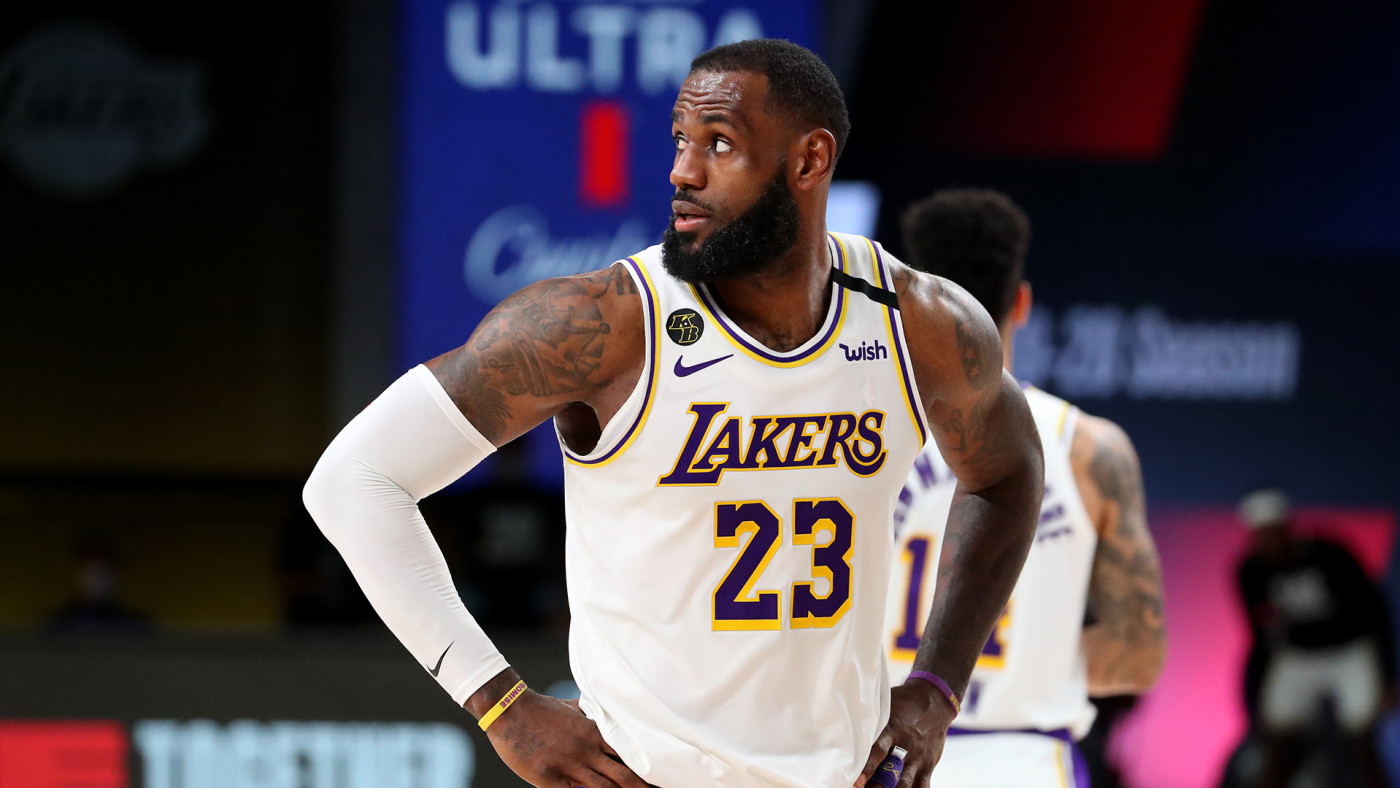
BYJOE PRICE warm apple night @BackwoodsAltar Sep 18, 2020
BY THE BY IS IT TOO OBVIOUS A CLUE

Image via Getty/Nathaniel S. Butler
NBA fans have took to social media to bash a ridiculous claim calling LeBron James an "illuminati wizard." Said theory came from right-wing conspiracy theorist and evangelist Sheila Zilinsky.
In an absolutely bizarre video picked up on by Right Wing Watch on Twitter, Zilinsky suggested that LeBron has been "conjuring up demons before every game" through his chalk toss. "Is LeBron James just an athlete?" she asks, before beginning to highlight his chalk toss in numerous photos.
"The sports world calls it a chalk toss, but it’s simply disguise for what he’s really doing,” Zilinsky says in her truly deranged video. “A high level conjuring, a spell, an incantation from this Illuminati wizard, where he’s summoning demons. I believe he’s conjuring up demons before every game. Plain and simple. Really take a look at these so-called chalk tosses, it is very frightening this ritual that he does."
Right-wing conspiracy theorist Sheila Zilinsky warns that LeBron James in an "Illuminati wizard' who is "conjuring up demons before every game" by tossing chalk into the air. pic.twitter.com/hh0LHPLapo— Right Wing Watch (@RightWingWatch) September 18, 2020
While it might seem impossible to figure out how she reached this conclusion about LeBron, her YouTube channel is full of similarly unhinged videos. Video titles include, "SPIRIT OF THE WORM: ARE YOU INFECTED?" and "Dismantling The SPIRITS Behind the COVID Pandemic." Far-right Christian conspiracy theorist or troubled Houston Rockets fan? You be the judge.
Read reactions to the definitely not true theory that LeBron is an "illuminati wizard" who is "conjuring demons" below.
Sounds extremely cool. https://t.co/dFHBUwaZST— Ben Collins (@oneunderscore__) September 18, 2020
Y’all have to admit that he’s the goat after this one. I’ve never heard anyone say that MJ was so good that demons could be the only explanation of his greatness lmao https://t.co/qblSjFhl13— Alexandre Fall (@YaBoyBennieC) September 18, 2020
Lebron started advocating for racial equality and all the right-wing nutjobs called him an Illuminati wizard 😭 https://t.co/KOOqRpTcHh— Henry is in pain. (@wokehenryy) September 18, 2020
Where exactly can someone sign up to be an Illuminati wizard cuz that sounds cool AF?— •𖤐Rö|3𖤐• (@RobMatheny80) September 18, 2020
Is it against the rules to summon a demon to help you win? I don’t see it in the rule book, it’s an air bud rule— Alex K (@alexquitska) September 18, 2020
There’s a bunch of people in Washington who can tell her that lebron destroys Wizards https://t.co/6PSpBDBvfY— Ziggy (@ZiggyOfAk) September 18, 2020
Right-wing conspiracy theories are a dime a dozen, but I must admit that if Lebron is a wizard who can "conjure up demons," my respect for him would grow. https://t.co/15vr13LiO8— Don Adams (@Dadams507) September 18, 2020
are you for real? being as good as lebron was always a pipe dream but now you're telling me i have to be a fucking wizard too? i give up https://t.co/sZBfBHtWn6— Fuccboi Extraordinaire (@Sans_Argonauts) September 18, 2020
23 enigma - Wikipedia
Music and art duo The Justified Ancients of Mu Mu (later known as The KLF and the K Foundation) named themselves after the fictional conspiratorial group "The Justified Ancients of Mummu" from Illuminatus!; the number 23 is a recurring theme in the duo's work. Perhaps most infamously, as the K Foundation they burnt one million poundson 23 August 1994 and subsequently agreed not to publicly discuss the burning for a period of 23 years. 23 years to the day after the burning they returned to launch a novel and discus…
The Number 23 - The illuminati Code - Religion - Nigeria
The Number 23 is a secret number that many don’t know about. The Christians today read the bible on daily basis but don’t understand/notice the often use of the number 2 and 3 and ask about the secret behind it July 23rd July 23rd is both the Sumerian and Egyptian New Year. You can make your research, it fun time Latin Alphabet There are 23 letters in the Latin alphabet. Which was used in ...










